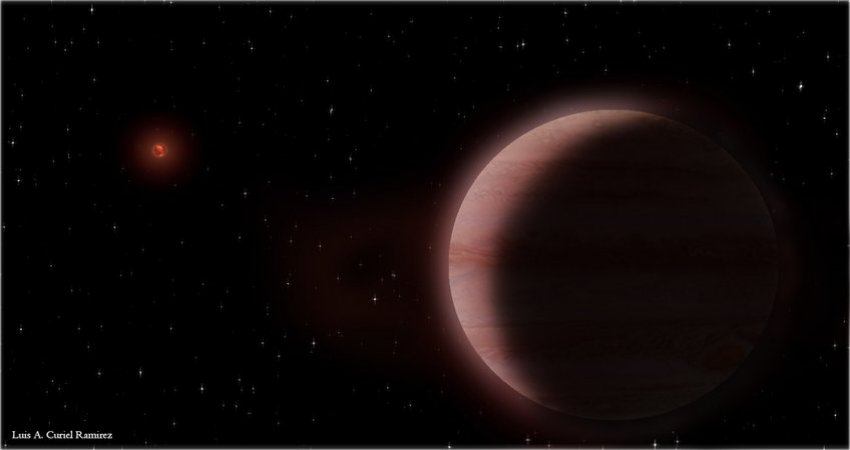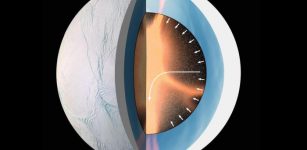‘Cosmic Couple’: Saturn-Sized Exoplanet Orbiting A Cool Dwarf Discovered With VLBA
Eddie Gonzales Jr. – MessageToEagle.com – Using Very Long Baseline Array (VLBA), astronomers have discovered a Saturn-sized planet closely orbiting a small, cool star 35 light-years from Earth.
This is the first discovery of an extrasolar planet with a radio telescope using a technique that requires extremely precise measurements of a star’s position in the sky, and only the second planet discovery for that technique and for radio telescopes.
Since June 2018, the astronomers tracked a star called TVLM 513-46546, a cool dwarf with less than a tenth the mass of our Sun. In addition, they used data from nine previous VLBA observations of the star between March 2010 and August 2011.
Extensive analysis of the data from those time periods revealed a telltale wobble in the star’s motion indicating the presence of a planet comparable in mass to Saturn, orbiting the star once every 221 days. This planet is closer to the star than Mercury is to the Sun.
Small, cool stars like TVLM 513-46546 are the most numerous stellar type in our Milky Way Galaxy, and many of them have been found to have smaller planets, comparable to Earth and Mars.
“Giant planets, like Jupiter and Saturn, are expected to be rare around small stars like this one, and the astrometric technique is best at finding Jupiter-like planets in wide orbits, so we were surprised to find a lower mass, Saturn-like planet in a relatively compact orbit. We expected to find a more massive planet, similar to Jupiter, in a wider orbit,” said Salvador Curiel, of the National Autonomous University of Mexico. “Detecting the orbital motions of this sub-Jupiter mass planetary companion in such a compact orbit was a great challenge,” he added.
More than 4,200 planets have been discovered orbiting stars other than the Sun, but the planet around TVLM 513-46546 is only the second to be found using the astrometric technique.
“Our method complements the radial velocity method which is more sensitive to planets orbiting in close orbits, while ours is more sensitive to massive planets in orbits further away from the star,” said Gisela Ortiz-Leon of the Max Planck Institute for Radio Astronomy in Germany said in a press release.
A third technique, called the transit method, also very successful, detects the slight dimming of the star’s light when a planet passes in front of it, as seen from Earth.
“The VLBA, with antennas separated by as much as 5,000 miles, provided us with the great resolving power and extremely high precision needed for this discovery,” said Amy Mioduszewski, of the National Radio Astronomy Observatory. “In addition, improvements that have been made to the VLBA’s sensitivity gave us the data quality that made it possible to do this work now,” she added.
Written by Eddie Gonzales Jr. – MessageToEagle.com Staff











